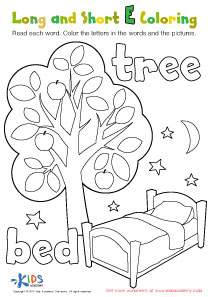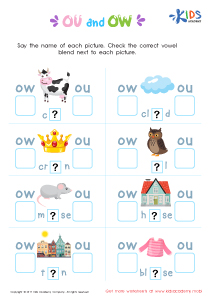Reading comprehension Normal Vowel Diphthongs Worksheets for Ages 6-7
13 filtered results
-
From - To
Boost your child's reading skills with our "Reading Comprehension Normal Vowel Diphthongs Worksheets" designed specifically for ages 6-7. These engaging worksheets focus on vowel diphthongs, helping young learners understand the nuances of consonant and vowel combinations. Each activity promotes phonetic awareness while enhancing comprehension through fun exercises and illustrated examples. Ideal for home or classroom use, our worksheets empower children to recognize, decode, and read words containing vowel diphthongs with confidence. Encourage a love for reading and improve literacy skills with our thoughtfully crafted materials, perfect for building a strong foundational understanding of language. Download and start exploring today!
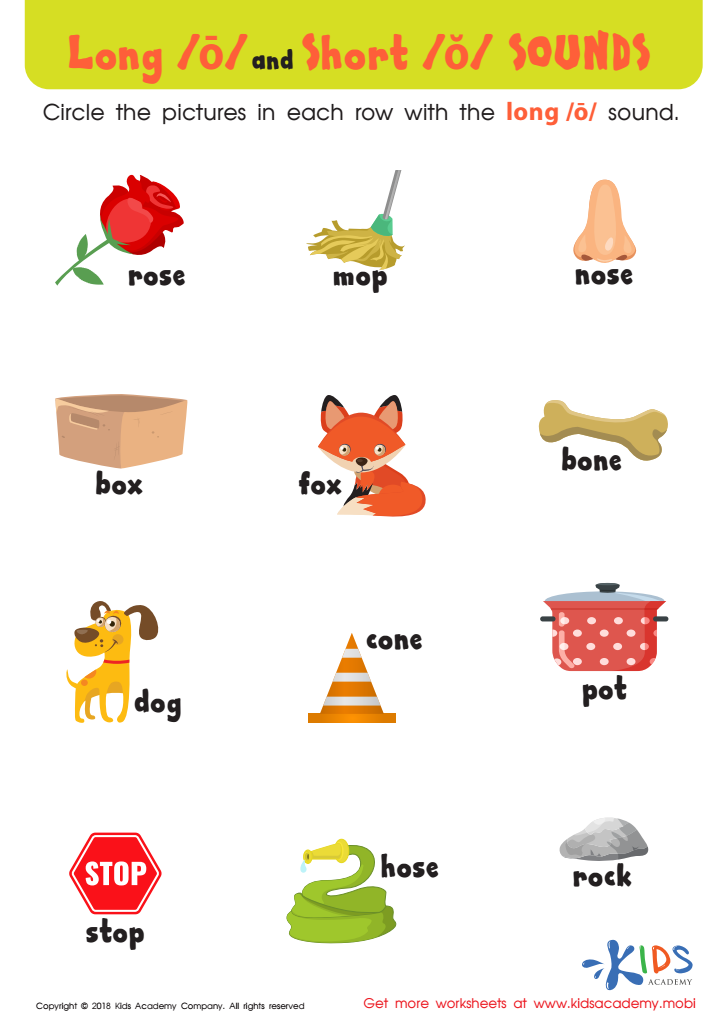

Reading: Long O and Short O Sounds Worksheet
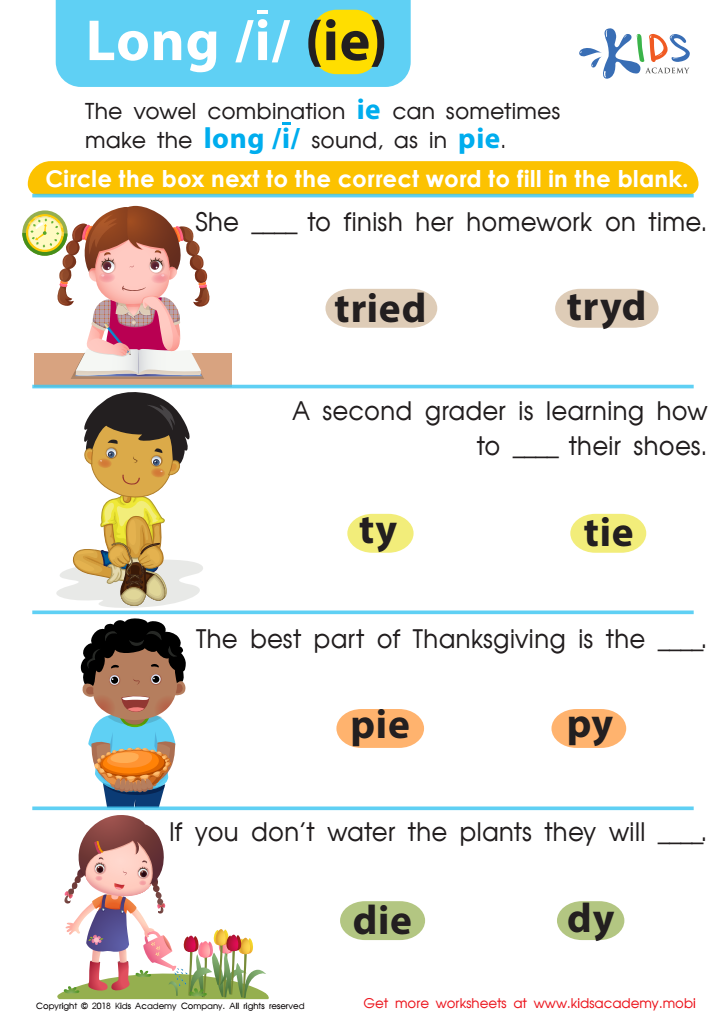

Reading: Long I and IE Worksheet
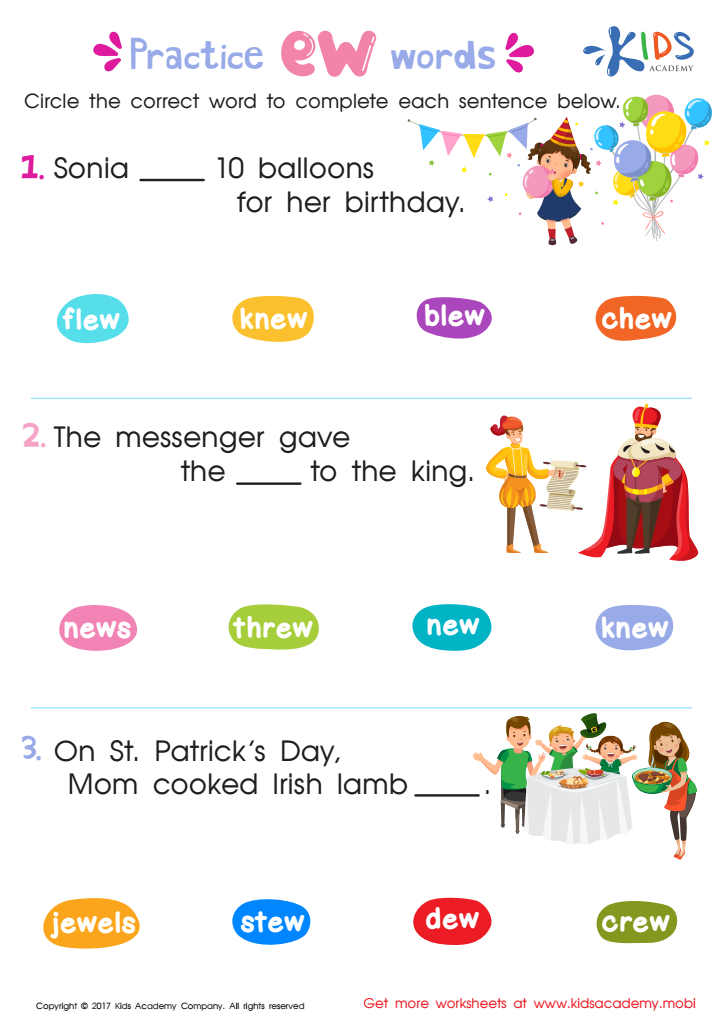

EW Words Worksheet
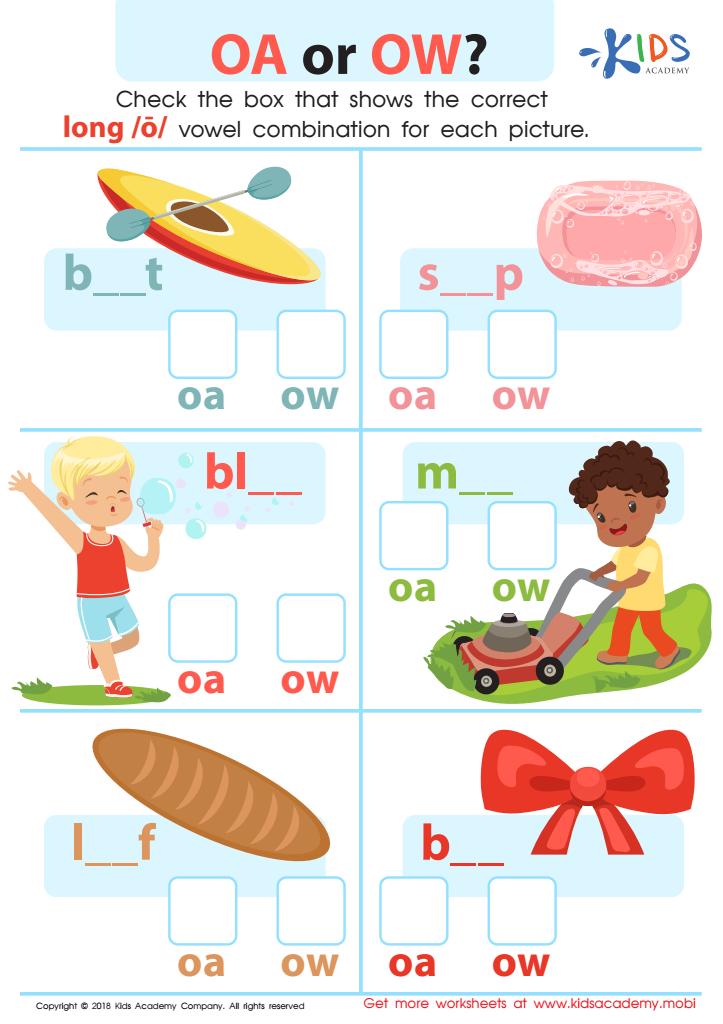

Reading: OA or OW Worksheet


Vowel Diphthongs OI OY Worksheet
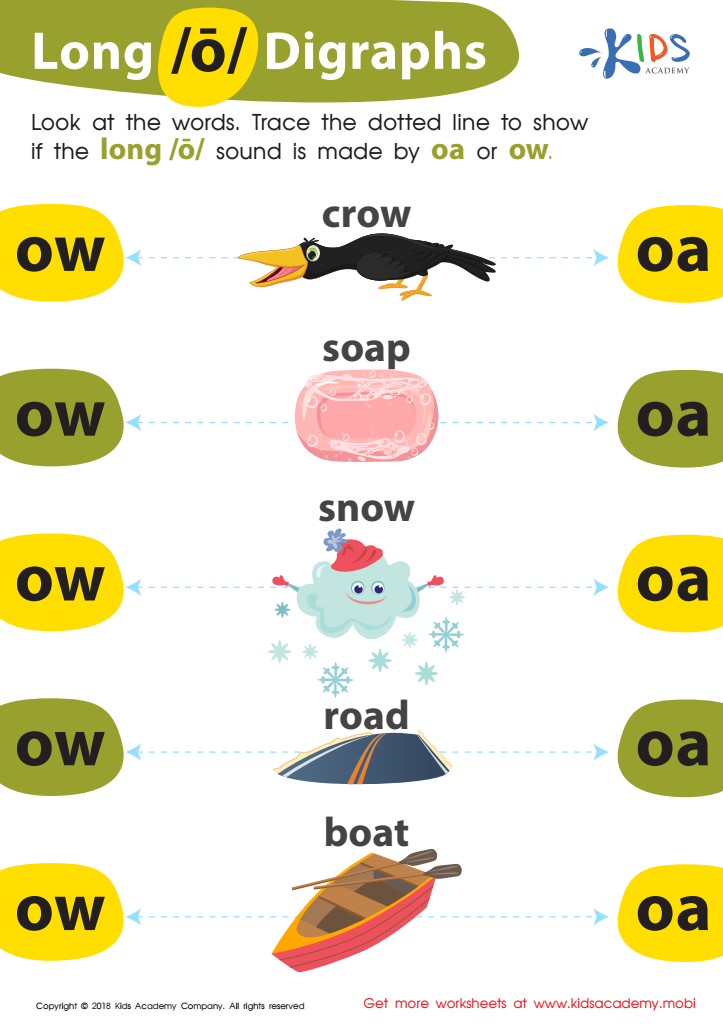

Reading: Long O Digraphs Worksheet
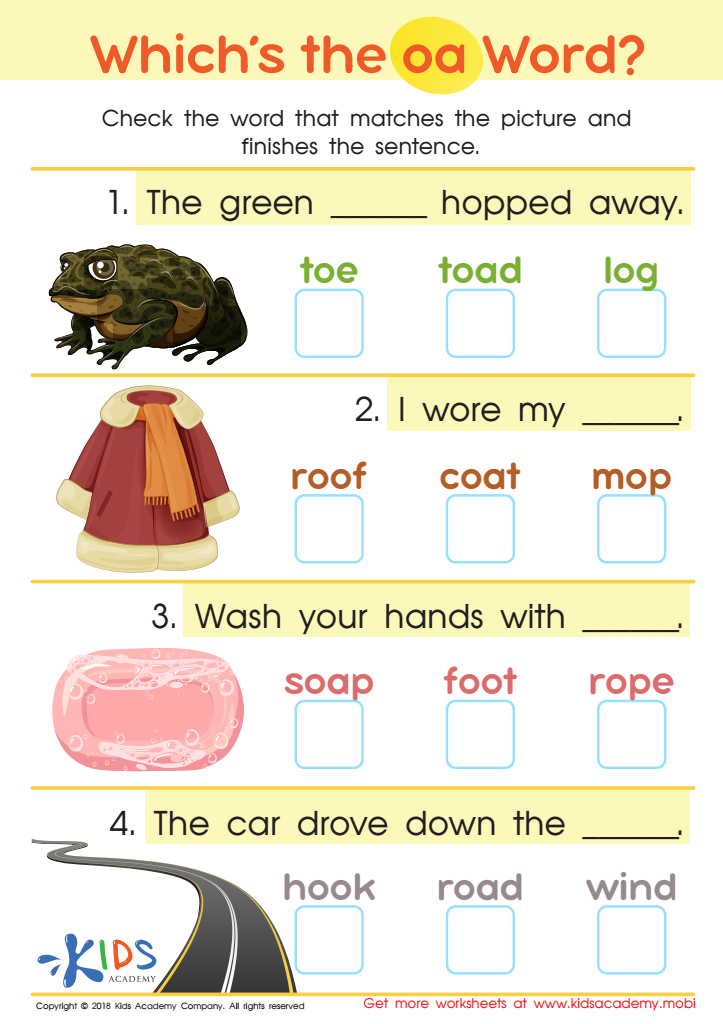

Which's the OA Word? Worksheet
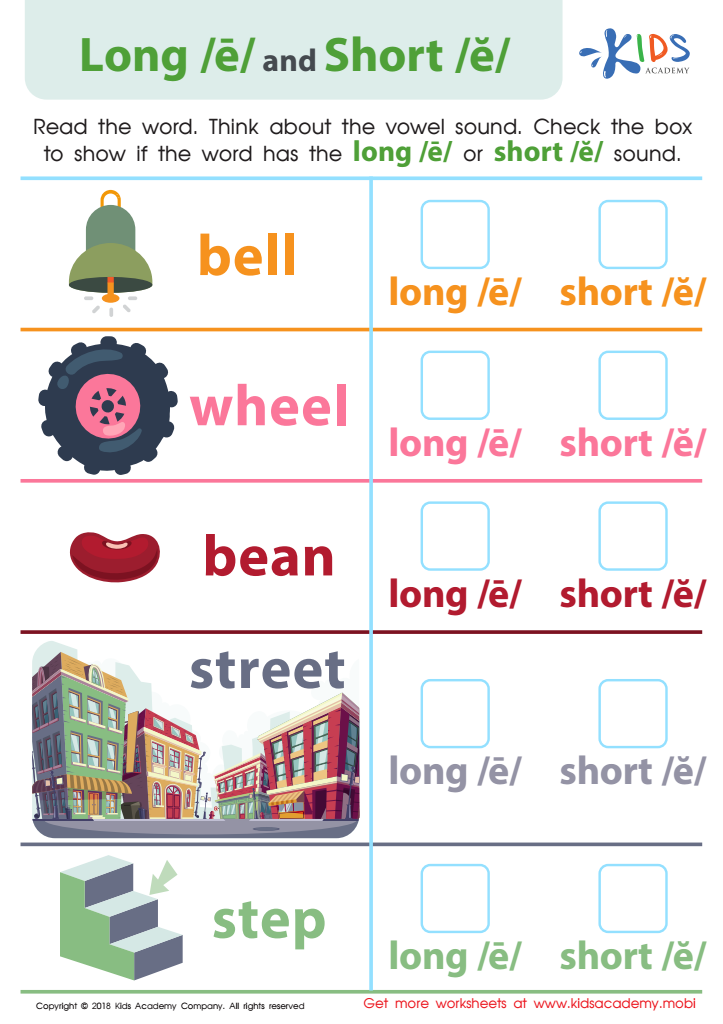

Reading: Long E and Short E Worksheet
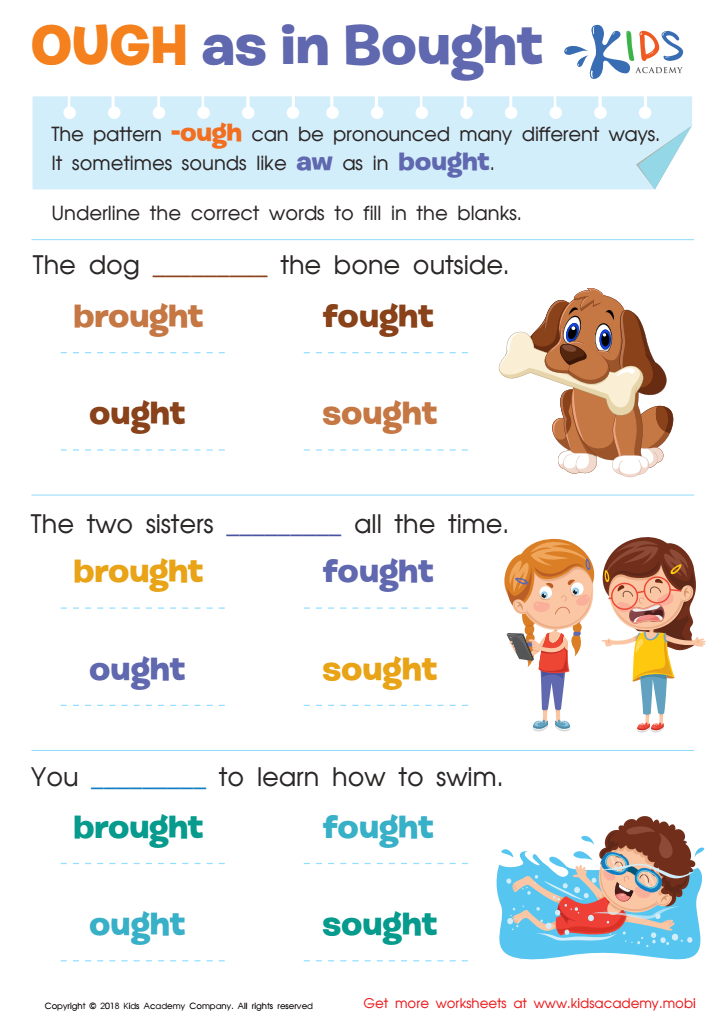

OUGH as in Bought Worksheet
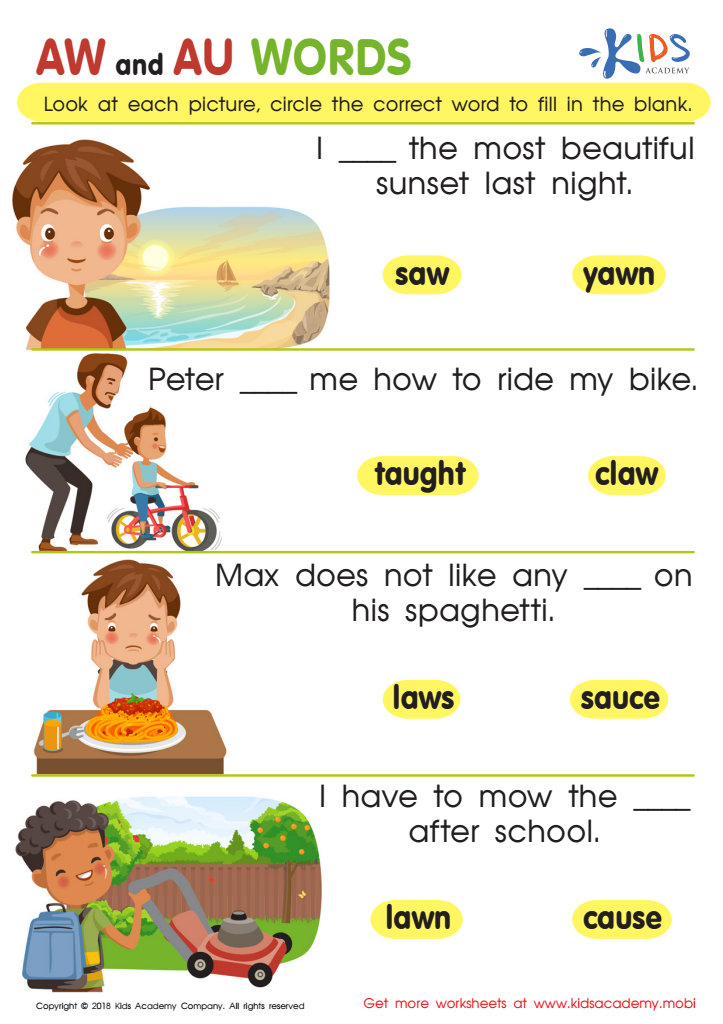

Reading: AW and AU Words Worksheet
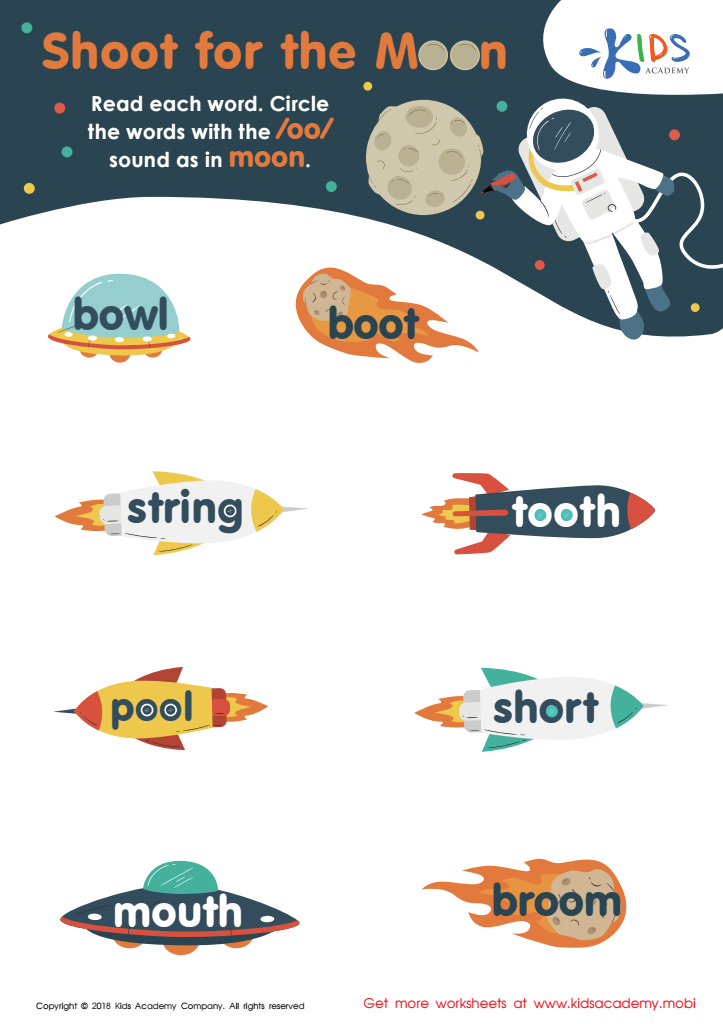

Reading: Shoot for the Moon Worksheet
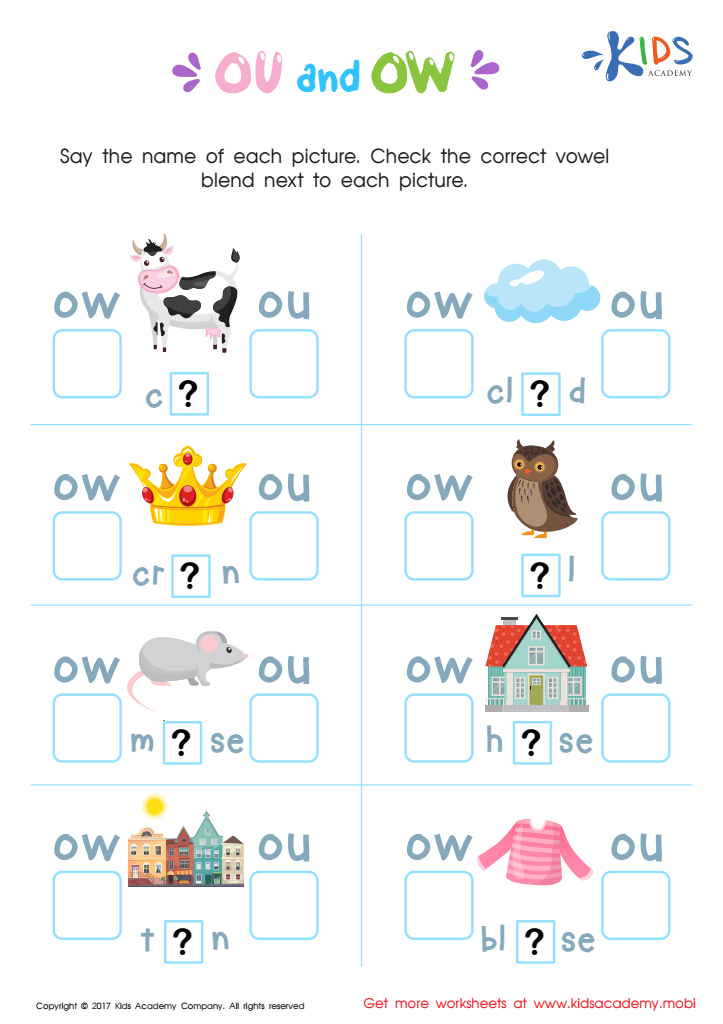

OU and OW Words Worksheet


Reading: EA as in Bread Worksheet
Reading comprehension is a foundational skill that develops during early schooling, and understanding normal vowel diphthongs is a key part of fostering this ability in children aged 6-7. Diphthongs occur when two vowel sounds jointly create a single syllable, as in "coin" or "out." Recognizing and mastering these sounds is crucial because they enhance phonemic awareness, which enables children to decode and read unfamiliar words effectively.
When parents and teachers focus on vowel diphthongs, they support children in developing their vocabulary and reading fluency. This, in turn, boosts reading comprehension. A solid grasp on these vowel sounds aids in understanding the nuances of language, allowing children to infer meaning from context—an essential skill for comprehension.
Moreover, navigating vowel diphthongs expands children’s ability to sound out words that appear in varied contexts, especially in different reading materials, including stories and instructional texts. This engagement with language supports their academic growth and confidence.
Ultimately, attentive guidance towards understanding vowel diphthongs not only assists in literacy but nurtures a lifelong love for reading, essential for success in all areas of learning. Therefore, it is vital for parents and teachers to prioritize this aspect of reading instruction early on.
 Assign to My Students
Assign to My Students




